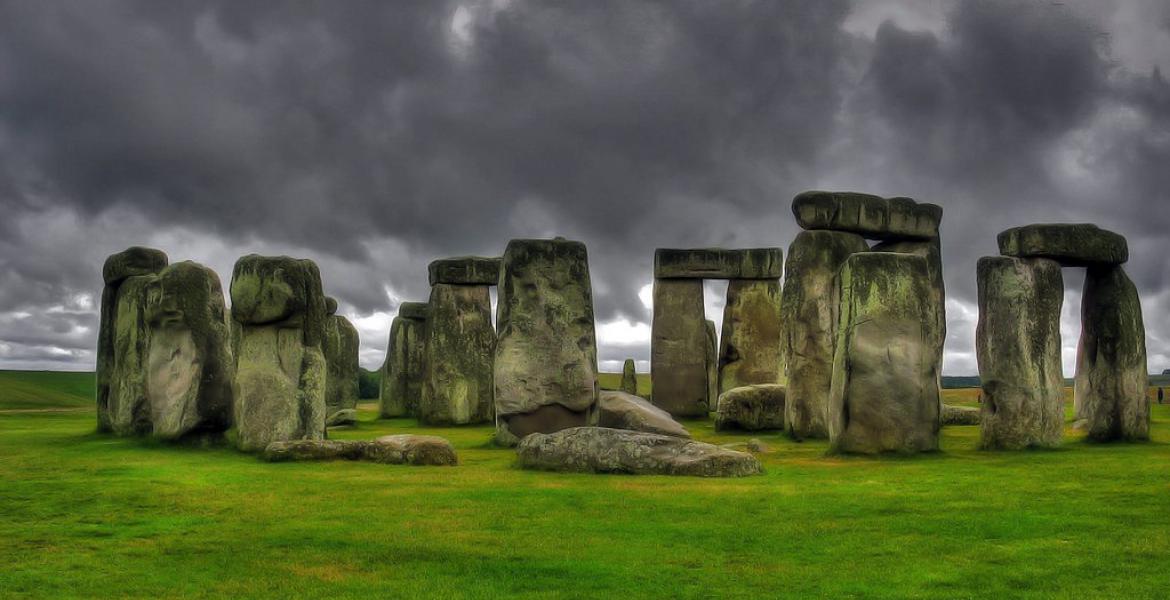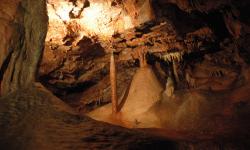Stonehenge, Wiltshire
When I was living just south of Devizes, I used to love dropping by Stonehenge on the way past to London, or Salisbury, or wherever. It was easy to park the car and amble across the road to look through the chain fence (I never saw the point of paying for entry when the fence wasn’t that much closer to the stones than the boundary which paying visitors could access), or take a stroll round the landscape. Although new discoveries are constantly being made about the stones and their history, it still remains an enigma. Previous theories held that the site was built by the Beaker people, a mysterious group of European migrants known primarily for their pottery; that it has been used as a hospital, a religious centre, and a social centre; and that it is a prime example of the ‘NeolithicThe 'New Stone Age'. See 'The Chronology of the Stone Age'. Revolution’, which assumes that indigenousNative to a particular place. Britons were pushed aside by incoming farmers, who changed our approach to land and religion. People are still perplexed by its structure, design, and how it was built. However, new finds are showing the site is much older than previously thought, and Amesbury has now been declared the oldest site in continuous occupation in Britain, with remains having been dated to 8820BCE. As such, this landscape has to be one of the most important for those with an interest in British history.
It is a shame, then, that so much has been done to the Stonehenge site of late. Yes, it has a brand new visitor centre and a larger car park (which, I have been assured, were not built on any barrows) that mean more people can park their cars and have some access to information. Some ‘Neolithic’ huts have been built which people can walk in and they even sometimes contain a staff member demonstrating a technique or who is willing to talk to visitors. They also put on special events, many of which sound interesting, such as stone knapping or craft days, throughout the year. I would recommend, if at all possible, timing your visit to coincide with one of these events. People can even tug on a rope attached to a stone, which will tell you how strong (or in my case, weak, as my score was resoundingly beaten by a 10 year old boy immediately afterwards) you are. On a logistical note, all the facilities are there, but unless you’re a National Trust or English Heritage member, be prepared to pay for it (and pre-book parking to avoid paying the £5 charge). It also should be noted that it is recommended for all visits, even by members of English Heritage or the National Trust, to be booked in advance, as entrance is timed.
The problem is that the Stonehenge site has been sterilised. It seems more about profit (the gift shop and café were bigger than the rest of the visitor centre) than information; style over substance. The car park and visitor centre are a good 30 minute walk from the circle (although a land train is available to take visitors down to the stones) and, in my view, by removing this from the proximity of the stones, visitors are denied something of the closeness of the experience. The walk could potentially be pleasant on a beautiful summer’s day, but on a cold and blowy autumn morning, it is just a distance. This isn’t helped by the fact that the old A342 is still there and used by the land trains, so it’s less of a country walk than a stroll along an A-road. It is possible, and recommended, that deviations through the woods and into the landscape are taken, but with such a long walk anyway (particularly with young children, or with those with mobility issues) this doesn’t really seem feasible. As has been the case for the last decade or so, the stones themselves are still roped off, and no access is granted in the usual course of the day.
As the stones are so historically important – and present such an interesting mystery – I have to say that Stonehenge is a must-see attraction for anyone interested in British history. But be prepared to be disappointed. On a warm day with the sun shining it could make a nice walk, but the walk will probably make up the majority of the visit. If you want closer contact with the stones and to experience possibly something (dis)similar to prehistoric celebrations, visit on a solstice, when there is free and open access to the circle (although for children under the age of about 15 I would suggest the winter solstice to be better, as it is more sedate and less packed with the pre-Glastonbury festival crowd). Or go to Avebury, which is only about 20 miles away.
To find out more about Stonehenge, see our article here. To find out more about visiting Stonehenge, click here.
- Log in to post comments







